
iStock
WELL, AFTER COMPILING (and rereading most of) my Books About Books list, I was left with a question: What’s next? Books about Love? Way too broad. Books about Cancer? Had some real winners (check out Alice and Oliver by Charles Bock) but a little depressing for summer. Books about Marriage? There was potential, but the books had a nasty habit of turning into Books about Divorce.
One category stuck, though. And it was awfully easy to tell which books fit in—you just had to read the title. Bestseller lists have seen a recent wave of books with “girl” somewhere on the cover. And moreover, these books all seem to follow a certain mold. These books feature women with dark pasts who tell half-truths. Full of mystery and violence, these “girl” books are far from “girly.” But one disclaimer: While it’s interesting to draw comparisons between these books, it does fall into the trap of pigeonholing female authors into an easily branded type, which implies that writing for a female audience is some kind of specialized field. Nah. These books can hold their own individually; and I’m grouping them because they have traits in common, not because they’re interchangeable. I just really like lists.
Gone Girl by Gillian Flynn (2012)
Flynn, with her breakneck tale of Amy Dunne’s disappearance and her husband’s 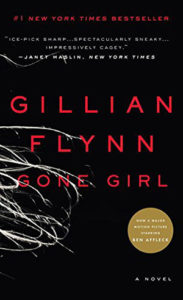 crumbling defense (given new life by the blockbuster film released in 2014) is arguably the “girl” who started it all. Maybe not with the “girl” titles (Stieg Larsson lays claim to that * ) but surely with the trajectory of the story. She has the mystery that takes readers to the brink of answers before shooting in another direction entirely (Girl on the Train follows suit with a red- herring solution). She masters the first-person narration, revealing the dark and elegantly clever mind hiding behind the feminine façade (The Luckiest Girl Alive makes similar strides). And she nails the painstakingly slow reveal of a web of secrets and lies found in All the Missing Girls, a tactic that keeps readers glued to the page. Then there’s the almost gleeful destruction of the idea that women are inherently meek and passive, which The Girls chips away at as well. Finely crafted and cutting, you will be thinking about this book long after you finish it.
crumbling defense (given new life by the blockbuster film released in 2014) is arguably the “girl” who started it all. Maybe not with the “girl” titles (Stieg Larsson lays claim to that * ) but surely with the trajectory of the story. She has the mystery that takes readers to the brink of answers before shooting in another direction entirely (Girl on the Train follows suit with a red- herring solution). She masters the first-person narration, revealing the dark and elegantly clever mind hiding behind the feminine façade (The Luckiest Girl Alive makes similar strides). And she nails the painstakingly slow reveal of a web of secrets and lies found in All the Missing Girls, a tactic that keeps readers glued to the page. Then there’s the almost gleeful destruction of the idea that women are inherently meek and passive, which The Girls chips away at as well. Finely crafted and cutting, you will be thinking about this book long after you finish it.
*Although it’s a different kind of mystery altogether, if we’re going by year published than Larsson’s Girl With the Dragon tattoo series was the real mother of this title trend. Comedian Amy Schumer certainly seems to be harking back to his example with her upcoming memoir, The Girl With the Lower Back Tattoo (a book that will hopefully not be featuring any murders).
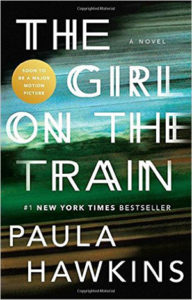 The Girl on the Train by Paula Hawkins (2015)
The Girl on the Train by Paula Hawkins (2015)
Hawkins’s narration switches among three women; the depressed ex-wife, the woman who took her place, and the woman whose disappearance turned all of their worlds upside down. Divorcee Rachel takes center stage, and rarely does one find a female character so utterly run down. There is no trace of the plucky heroine to be found; Rachel is deeply unhappy and self-destructive. But allowing her—and the other two women—to make mistakes with real consequences keeps the novel grounded and makes the suspense all the more real. And as Rachel unspools the growing danger, readers can’t help but follow her lead with bated breath.
Luckiest Girl Alive by Jessica Knoll (2016)
This is easily the darkest of the bunch, exploring the tragic past that led to narrator Ani’s 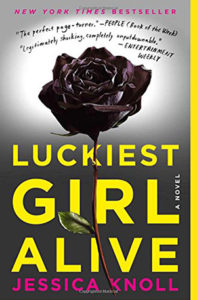 hard-won self-reinvention and hidden rage. Finding out Ani was gang-raped in high school by boys she considered friends is appalling enough, but the real shocker is a second and horrifically violent crime that is unflinchingly detailed in full. But Knoll’s staunch commitment to facing these horrors head on makes the book all that more compelling. Moreover, Knoll recently revealed that her own sexual assault inspired Ani’s story. This heartbreaking dose of reality shines through in Ani’s raw and honest reactions, making her an indispensable example of a survivor whose pain is a source of strength rather than weakness. And kudos to Knoll for taking control of her own narrative.
hard-won self-reinvention and hidden rage. Finding out Ani was gang-raped in high school by boys she considered friends is appalling enough, but the real shocker is a second and horrifically violent crime that is unflinchingly detailed in full. But Knoll’s staunch commitment to facing these horrors head on makes the book all that more compelling. Moreover, Knoll recently revealed that her own sexual assault inspired Ani’s story. This heartbreaking dose of reality shines through in Ani’s raw and honest reactions, making her an indispensable example of a survivor whose pain is a source of strength rather than weakness. And kudos to Knoll for taking control of her own narrative.
All the Missing Girls by Megan Miranda (2016)
Miranda provides a fresh spin on her mystery/thriller with a simple move—she tells the 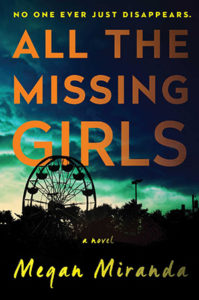 story in reverse. When narrator Nic returns to her hometown, she finds that her past is waiting for her, including the mystery of her best friend’s disappearance 10 years before. But after this brief exposition, the book becomes a day-by-day account moving backward toward the day Nic arrived, and the night another girl went missing. As information filters through the fractured timeline, readers feel simultaneously closer to the truth and farther away than ever. The effect is maddening but incredibly addicting. Keeping track of what the characters know and have done requires a little extra effort, but it’s worth it for an ending that is truly surprising.
story in reverse. When narrator Nic returns to her hometown, she finds that her past is waiting for her, including the mystery of her best friend’s disappearance 10 years before. But after this brief exposition, the book becomes a day-by-day account moving backward toward the day Nic arrived, and the night another girl went missing. As information filters through the fractured timeline, readers feel simultaneously closer to the truth and farther away than ever. The effect is maddening but incredibly addicting. Keeping track of what the characters know and have done requires a little extra effort, but it’s worth it for an ending that is truly surprising.
The Girls (2016) by Emma Cline
For the sake of honesty, I’ll admit that this was my least favorite of the bunch. Although 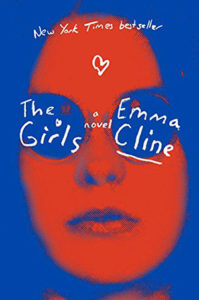 this puts me on the wrong side of a barrage of glowing reviews, I was left wanting just a little more. It certainly had all the right elements—a slow burn sense of dread, a gruesome murder, sex and drugs and a girl in their midst. In brief: The adult Evie reflects on her brief adolescent experience with a cult. Initially drawn in by the intoxicating friendship of older girl Suzanne, Evie is blind to the cult’s darker undercurrents. She ends up caught between her unsatisfying life and the allure of the outsiders, existing somewhere on the fringes of both. Because Evie never fully abandons her ties to her old world (a relief to readers, who will see the red flags long before she does) she isn’t privy to the inside workings of the cult, limiting the real action and suspense of the story. But this reliance on Evie’s introspection gives Cline the opportunity to employ some truly beautiful prose in her stray observations on youth, identity and honesty.
this puts me on the wrong side of a barrage of glowing reviews, I was left wanting just a little more. It certainly had all the right elements—a slow burn sense of dread, a gruesome murder, sex and drugs and a girl in their midst. In brief: The adult Evie reflects on her brief adolescent experience with a cult. Initially drawn in by the intoxicating friendship of older girl Suzanne, Evie is blind to the cult’s darker undercurrents. She ends up caught between her unsatisfying life and the allure of the outsiders, existing somewhere on the fringes of both. Because Evie never fully abandons her ties to her old world (a relief to readers, who will see the red flags long before she does) she isn’t privy to the inside workings of the cult, limiting the real action and suspense of the story. But this reliance on Evie’s introspection gives Cline the opportunity to employ some truly beautiful prose in her stray observations on youth, identity and honesty.
—Emily Harburg
